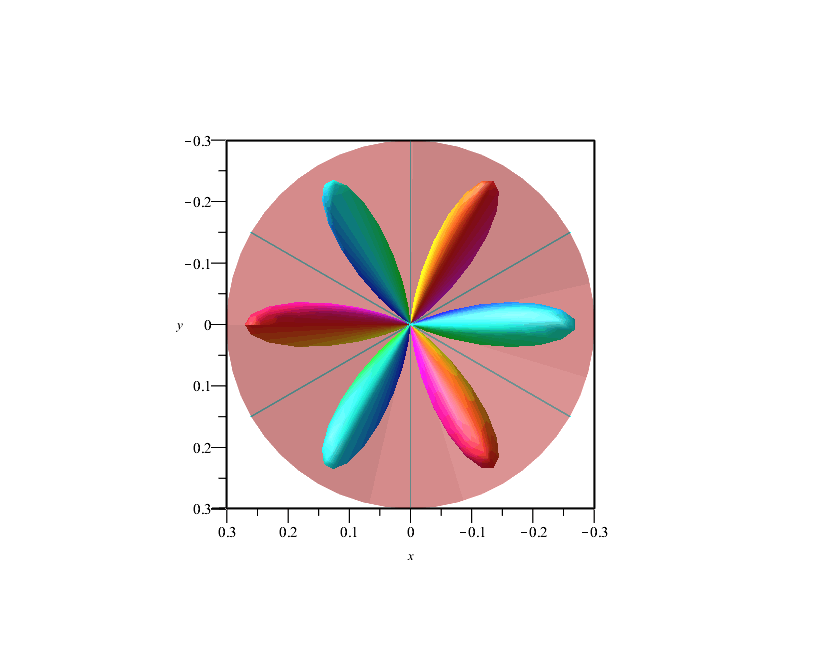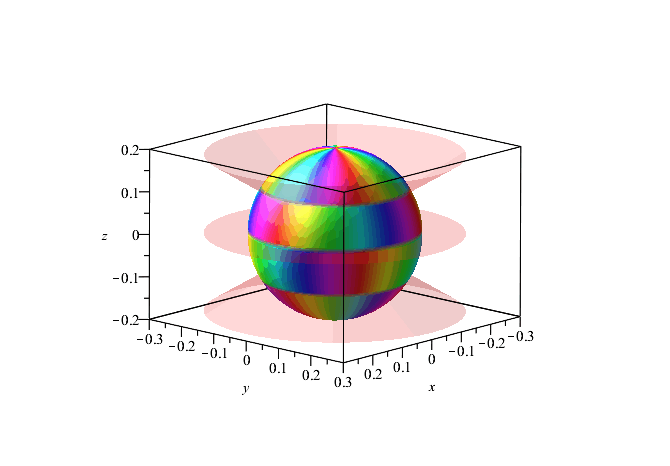
Plot of l = 6, m = 3 spherical harmonic plotted as phase colours (red = 0, cyan = π) on the surface of a sphere. There are m = 3 rainbows of colour going around the z axis. The l - |m| = 6 - 3 = 3 cone (θ) nodes may be seen in pink.

Magnitude squared of l = 6, m = 3 spherical harmonic plotted as a function of θ and ϕ and coloured according to phase. The three rainbows are perhaps easier to see, and the cones are now separating different pieces of the orbital.
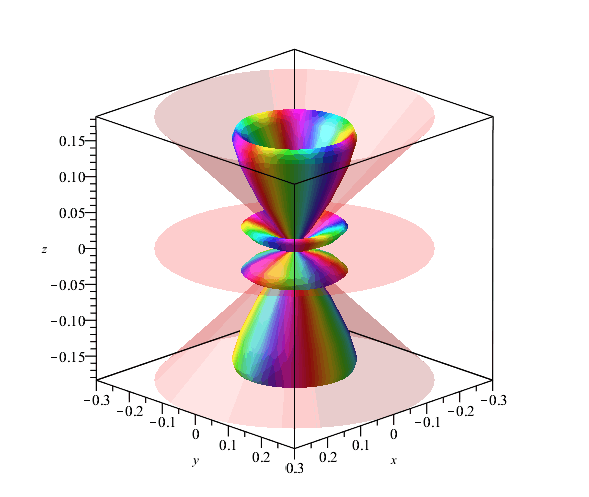
Magnitude squared of the real combination ![]() plotted as a function of θ and ϕ and coloured according to phase. We have the same function of θ and therefore the same cone nodes, but instead of 3 rainbows we now have three vertical nodal planes (ϕ nodes). First picture has only the cones showing:
plotted as a function of θ and ϕ and coloured according to phase. We have the same function of θ and therefore the same cone nodes, but instead of 3 rainbows we now have three vertical nodal planes (ϕ nodes). First picture has only the cones showing:
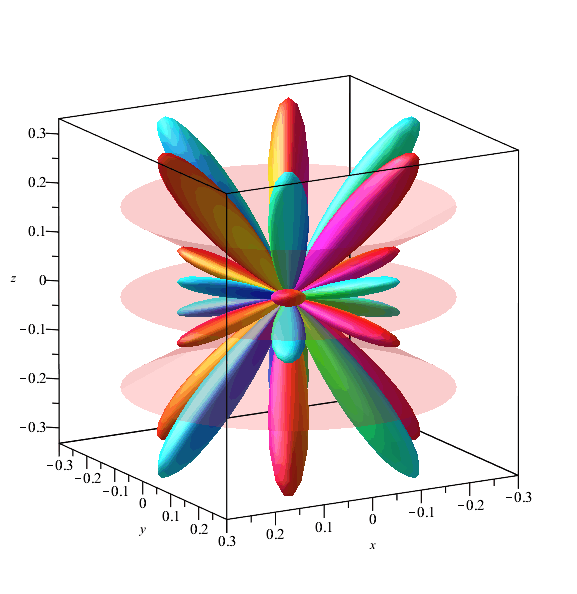
Next we add the vertical plane nodes:
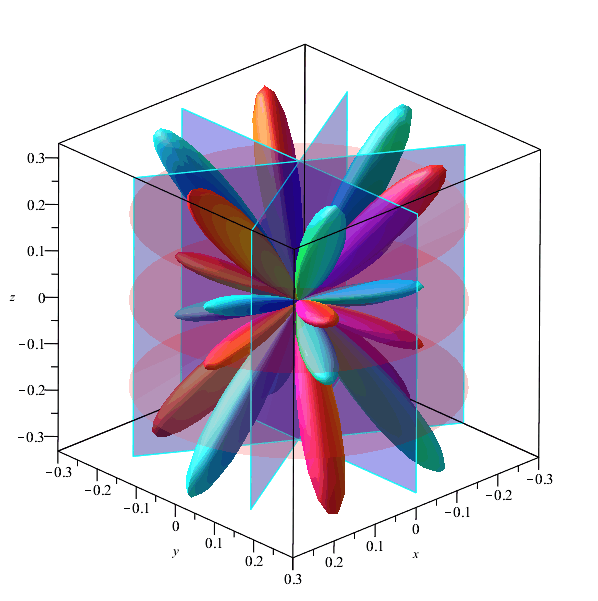
If we look down on this, we see that the xz plane is not a node. This means that this must be the cos(3ϕ) function, which results from adding the two spherical harmonics.
